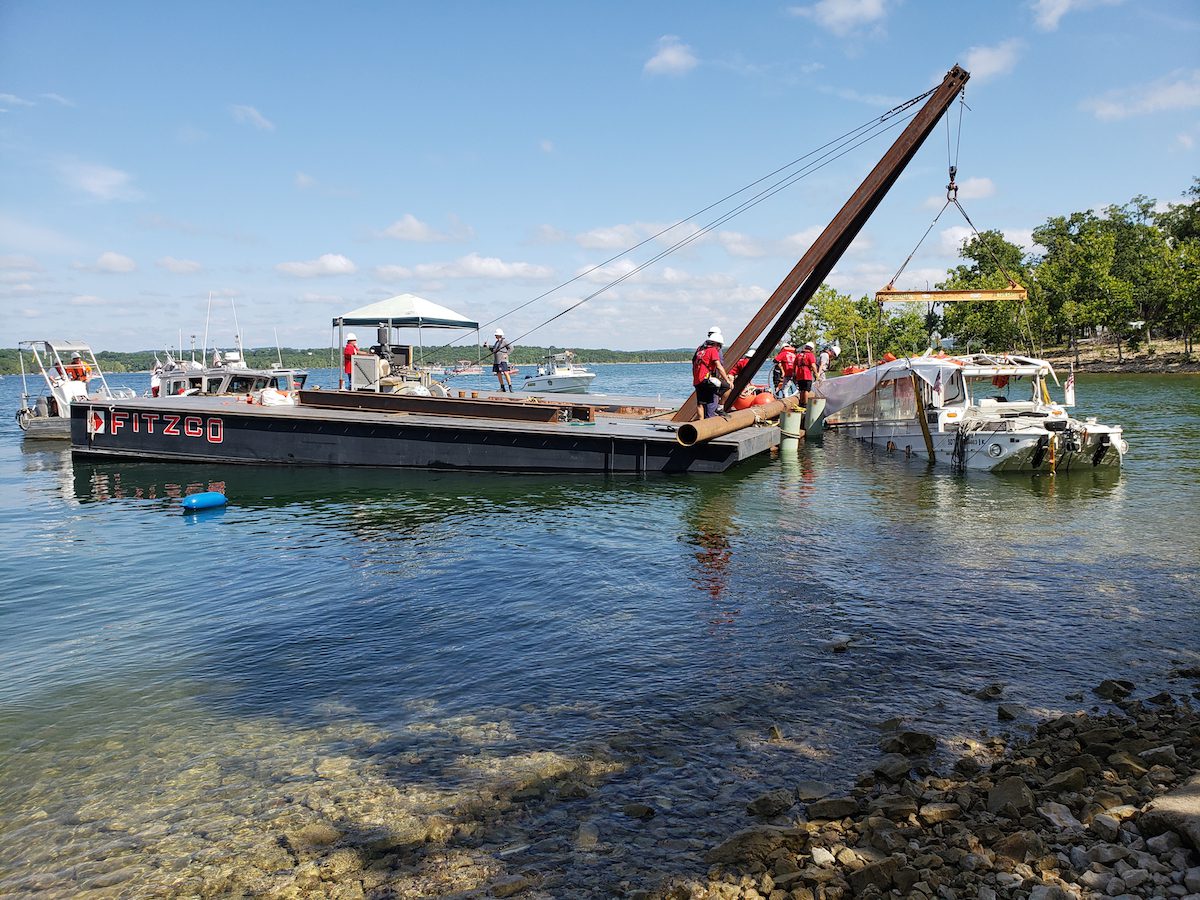Firefighting Continues on Maersk Containership in Arabian Sea
Update (July 20): The Indian Coast Guard reports some progress in fighting the fire. Full update at bottom. A newbuild containership chartered by Maersk has suffered a major cargo fire...


The Coast Guard oversees the removal of Stretch Duck 7 from Table Rock Lake in Branson, Missouri, July 23, 2018. U.S. Coast Guard Photo
The U.S. House of Representatives has passed a Coast Guard reauthorization bill that includes policies to improve the safety of World War II-era amphibious DUKW boats, commonly referred to as “duck boats.”
The House of Representatives passed H.R. 6865, also known as the Don Young Coast Guard Authorization Act of 2022, by a vote of 378-46.
This legislation authorizes funding that will enhance Coast Guard operations and help the service replace and modernize its cutters, as well as shoreside and cyber infrastructure. The bill also includes provisions for safety improvements of passenger duck boats and holds the Coast Guard accountable to National Transportation Safety Board safety recommendations.
Amphibious DUKW boats were initially designed and built in the 1940s for military use during World War II. Some were later converted for commercial passenger service, with the boats becoming staples of tourist destinations throughout the United States under the “Ride the Ducks” brand.
They design and repurposing of the vessels present special challengers to ensure passenger safety, requiring greater stability and reserve buoyancy, canopy and seatbelt removal before water operations and training for crews.
NTSB Chair Jennifer Homendy on Friday praised the passing of the bill with the provisions.
“This is the first meaningful action to improve safety on duck boats in 20 years,” Homendy said. “I especially thank Reps. Peter A. DeFazio, Sam Graves, Salud O. Carbajal, Bob Gibbs, André Carson and Julia Brownley for championing these provisions and their efforts to improve maritime safety for all.”
Homendy testified earlier this month before the House Transportation and Infrastructure Subcommittee on Coast Guard and Maritime Transportation on duck boat and other safety issues.
The NTSB first identified safety issues with the vessels and made recommendations for improvements in 1999 with the sinking of the Miss Majestic in Hot Springs, Arkansas, which claimed the lives of 21 people. But NTSB’s recommendations were not acted on and, following the deadly 2018 sinking of the Stretch Duck 7 in Branson, Missouri, the NTSB again made recommendations. In its report of the Stretch Duck 7 incident, the NTSB cited the Coast Guard’s failure to require sufficient reserve buoyancy as contributing to the accident, which claimed the lives of 17 people, and called out previous inaction to address emergency egress as the vessel’s fixed canopy impeded passengers from escaping.
The legislation passed this week, if enacted, would also require the Coast Guard to respond to NTSB safety recommendations within 90 days, as is required for agencies within the Department of Transportation (USDOT). When the Coast Guard was transferred from USDOT to the newly established Department of Homeland Security in 2003, it was no longer subject to the requirements.
“This is an important initial step to ensure the Coast Guard acts on safety recommendations and increases transparency – ensuring that Congress, and the public, are aware of action or inaction,” the NTSB said.
Join the gCaptain Club for curated content, insider opinions, and vibrant community discussions.


Join the 107,361 members that receive our newsletter.
Have a news tip? Let us know.
Access exclusive insights, engage in vibrant discussions, and gain perspectives from our CEO.
Sign Up




Maritime and offshore news trusted by our 107,361 members delivered daily straight to your inbox.



Essential news coupled with the finest maritime content sourced from across the globe.
Sign Up